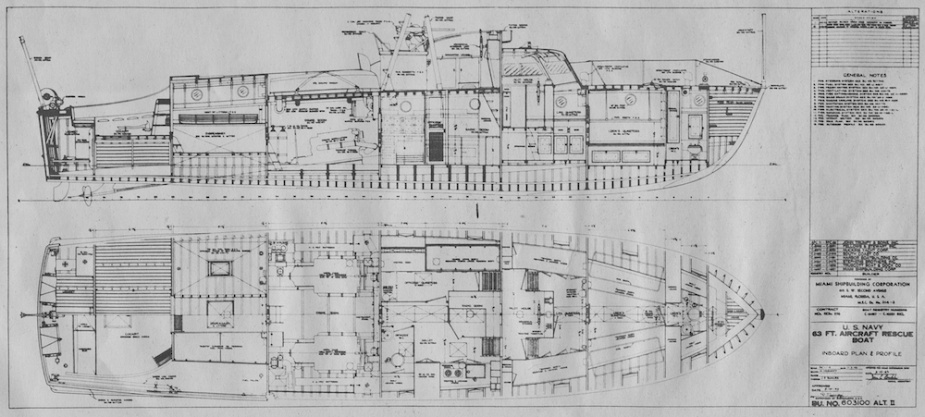HMAS Air Rest
| Class |
Air/Sea Search and Rescue Vessel |
|---|---|
| Type |
Air-Sea Rescue Launch |
| Pennant |
ASR921 |
| Builder |
Harbor Boat Building Co, USA |
| Commissioned |
20 September 1944 |
| Decommissioned |
25 May 1949 |
| Fate |
Transferred to the Royal Australian Air Force in 1950 |
| Dimensions & Displacement | |
| Displacement | 24 tons |
| Length | 63ft (19.2m) |
| Beam | 15 ft (4.57m) |
| Draught | 3 ft 4 in (1.01m) |
| Performance | |
| Speed | Up to 28 knots |
| Complement | |
| Crew | 7-8 including 2 RAAF telegraphists |
| Propulsion | |
| Machinery | Twin Hall-Scott petrol engines |
| Horsepower | 1,200 bhp |
| Armament | |
| Guns | 2 x twin Lewis guns |
HMAS Air Rest was one of 21 air/sea rescue (ASR) vessels originally built in the USA and Canada between 1943 and 1945, and transferred to the RAN under the Lend-Lease Agreement. These vessels were originally designed as anti-submarine craft but their high speed and manoeuvrability made them ideal as search and rescue vessels. In this role, their hulls were painted black and their upper decks and superstructure painted bright yellow. One vessel, HMAS Air Sprite, was built locally in 1960 to an almost identical design.
Air Rest was commissioned on 20 September 1944 in Sydney under the command of Skipper (later Sub Lieutenant, RANVR) Ronald Stringer and officially listed as a tender to HMAS Rushcutter, and later to HMAS Madang. She remained alongside in Rushcutters Bay preparing for sea until 28 February 1945 after which she conducted ASR duties from Watsons Bay. Further ASR duties were performed in Jervis Bay between 7 and 13 March. Air Rest departed Sydney on 17 March in company with HMAS Air Clan bound ultimately for Tarakan. They were joined en route by HMAS Air Host in Townsville.
Air Rest arrived at Madang on 17 April and shortly afterwards underwent an engineering check at Alexishafen. From there, she and Air Clan were taken in tow by HMAS Bathurst (I) on 24 April, bound for Morotai. During the transit the tow was taken over by HMAS Bundaberg (I). At Morotai, Air Rest underwent further maintenance during which she had a radio compass installed and new propellers and shaft fitted, she commenced the final leg of her journey on 19 May under tow by HMAS Latrobe in tandem with HMAS Air Guide. They arrived at Tarakan on 22 May where they commenced ASR duties.
A new airstrip was built at Tarakan in June and Air Guide was constantly required to provide ASR coverage for aviation operations. She was also, on occasion, required to transport small numbers of Japanese prisoners of war from nearby locations to the base at Tarakan.
Air Rest completed two rescues of Allied airmen during July; one within Tarakan harbour, and the second south-east of Sibetek Island. In September she was called upon to rescue four Army personnel who had been reported missing in a small fishing boat.
On 31 October Air Rest left Tarakan for Balikpapan where she continued ASR duties throughout November and December. She began the voyage back home to Australia on 28 December when she departed Balikpapan under tow from HMAS Cessnock. After briefly operating as a tender to HMAS Moreton in Brisbane, she arrived back in Sydney on 24 May 1946 where she decommissioned. Air Rest continued ASR duties as well as performing auxiliary tasks such as radar tracking duties for HMAS Watson and Murchison. She was also utilised for direction finding calibration in a number of other RAN ships.
The boat briefly recommissioned as HMAS Air Rest on 19 April 1949 before paying off into reserve on 25 May 1949 prior to being transferred to the RAAF in 1950.



